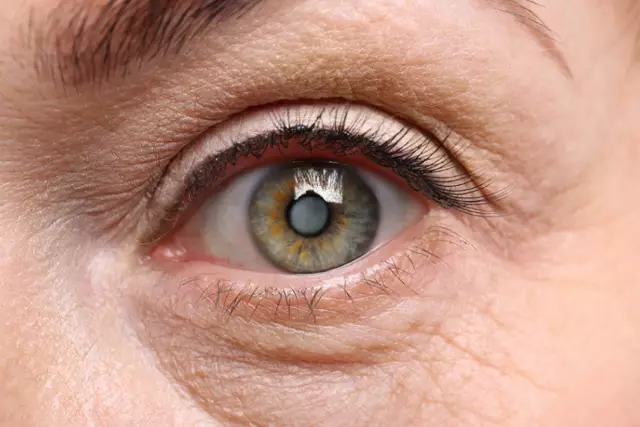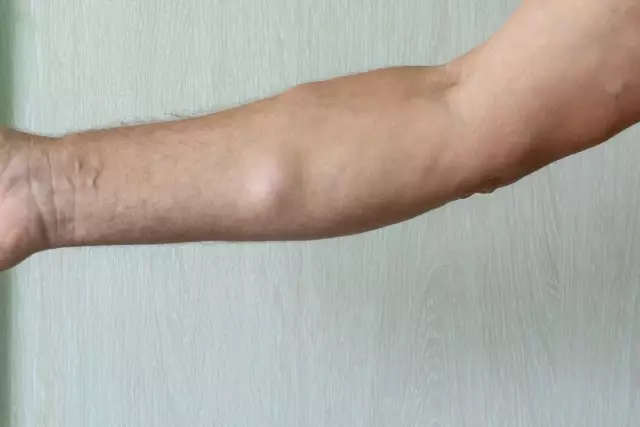- Author Rachel Wainwright [email protected].
- Public 2023-12-15 07:39.
- Last modified 2025-11-02 20:14.
Dental calculus
How does tartar appear?

Food debris, microbes, mucus and various microorganisms are the main building blocks for the formation of so-called dental plaque. In fact, this is the well-known dental plaque. It is very soft and easy to brush off with regular brushing. If the oral hygiene is not maintained, the plaque begins to harden. As a rule, this process continues for several months, after which a person develops tartar. Basically, deposits accumulate in those places where self-cleaning of teeth does not take place, since it is here that ideal conditions for the growth of bacteria and the formation of tartar are formed.
In people who do not practice good oral hygiene and do not brush their teeth, the amount of deposits increases with age, and this process begins in childhood. The neglected tartar covers the necks of the teeth and their roots, and in the absence of proper care even goes over to dentures.
Causes of dental calculus
Periodontists identify several factors that can trigger the appearance of tartar:
- irregular cleaning of teeth, non-observance of oral hygiene;
- the habit of chewing food on one side of the jaw;
- brushing your teeth with cheap toothpastes of dubious quality;
- the predominance of soft foods in the daily diet;
- incorrectly placed fillings, congenital defects of the teeth;
- violation of the salt balance in the body.
Types of calculus
Depending on the place of localization of deposits, experts distinguish supragingival and subgingival tartar. The first is clearly visible when examining the oral cavity, it is a white or yellowish mass, has a hard consistency. Removal of tartar above the gum is not particularly difficult and is performed in any dental clinic.
Subgingival calculus is very hard, dark brown or greenish gray in color. It adheres tightly to the surface of the lower part of the tooth and is only detected when examined by a dentist using a special probe.
Signs of tartar
First of all, those people who feel bad breath and suffer from bleeding gums should be alert. In order to make sure that there is tartar, you can carry out a simple diagnostic procedure: take a cotton swab soaked in Lugol's solution and carefully wipe your teeth with it. Hardened deposits are well distinguished by their darker color. This can reveal supragingival tartar, but deposits can also accumulate under the gum, so if you suspect or have any adverse symptoms, it is best to go straight to the dental clinic.
What is the purpose of removing tartar?
It should be noted right away that tartar is an excellent breeding ground for pathogenic bacteria that contribute to the development of a number of inflammatory diseases of the oral cavity. In addition, the hardened deposits constantly increase, go down into the depths of the tooth socket and over time form a kind of "pockets" - voids where food debris accumulates and decays. As a result, the tooth loses its stability and may simply fall out of the hole. Add to that unpleasant consequences such as bad breath or bleeding gums, and you will understand why dentists constantly say that removing tartar is absolutely necessary.
How do doctors remove tartar?

It is almost impossible to perform high-quality dental calculus removal at home. Yes, soft plaque can be easily removed with a toothbrush, brushes or dental floss, but in the case of hardened deposits that have a very dense consistency, everything is different. Removal of tartar can be carried out only in specialized medical institutions, where specialists will carry out professional teeth cleaning. This procedure is not very quick, but it is very effective and painless.
As for the methods used, as a rule, doctors use modern ultrasound preparations. With their help, tartar removal is performed in the most gentle way and does not cause any discomfort to the patient. The principle of operation of such devices is based on the use of ultrasonic handpieces that vibrate at a very high frequency. Professional removal of tartar will allow a person to forget about problems with deposits for at least 2-3 months, after which the procedure will need to be repeated.
After cleaning with ultrasound, it is also advisable to polish the teeth and cover them with a special protective compound, which prevents the growth of bacteria, the appearance of tartar and gives the teeth an attractive appearance.
YouTube video related to the article:
The information is generalized and provided for informational purposes only. At the first sign of illness, see your doctor. Self-medication is hazardous to health!






